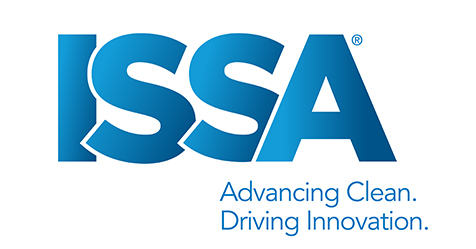Today’s economic climate continues to put pressure on cleaning professionals to increase overall efficiency without sacrificing effectiveness.
The global recession is pushing companies to reevaluate all strategies and technologies, cut costs and improve value propositions to a greater degree than ever before.
For cleaning service professionals, there are a myriad of products and equipment designed to help cut costs and increase production rates without sacrificing quality of service.
Unfortunately, with the economic conditions as they are, most budgets are stretched, making new equipment acquisition costs prohibitive.
However, there are operational production strategies that have been proven beneficial in increasing productivity and effectiveness without the additional cost of new equipment.
One of the most effective of those strategies is team cleaning.
When properly implemented, team cleaning strategies have been tested and proven to provide:
- Increased efficiency — rates of production — by increasing the amount of work that can be done in a shorter amount of time
- Higher quality of services due to team cleaning”s self-monitoring features.
These two team cleaning benefits, coupled with competitive rates, can result in a larger market share for cleaning contract professionals or reduced costs for in-house operators.
Traditional cleaning production strategies have utilized an approach for executing tasks in which the individual worker is responsible for accomplishing all cleaning tasks within a given area.
This type of process is often referred to as zone or gang cleaning.
This form of cleaning demands that each worker be trained and equipped with the proper tools to accomplish restroom cleaning, vacuuming and hard surface cleaning, dusting and detail cleaning as well as trash removal.
This process is still frequently used today and, in many facility types, it remains the most beneficial method of accomplishing cleaning tasks.
The “team or function cleaning” reinforces the theory that if a group of individual cleaning specialists are trained to move through a facility in a systematic method accomplishing specific cleaning functions in multiple areas, then both efficiency and quality of work will improve.
Over the years, this theory has proven true in a variety of facility types and sizes.
Team Cleaning Fosters Specialists
What exactly does team cleaning do?
From a general perspective, team cleaning fills two roles:
- It creates a systematic method of workflow — much like other cleaning concepts
- It develops specialists in a specific cleaning function — decidedly unlike other cleaning concepts.
Essentially, team cleaning produces higher quality work and better efficiency by employing groups of individual cleaning specialists that are trained to move systematically through a facility, performing tasks that they have mastered.
For instance, one employee might be assigned vacuuming and general floor care while another person collects the trash.
Another worker might be assigned to restrooms while another is dusting and detail cleaning.
The concept here is simple: Repetition of the same function over time will create specialization in that task set, thereby creating a more effective workforce that gets the job done in a shorter amount of time.
Following the completion of each task, the next team member will check the work of the previous one — the vacuuming and general floor care team member follows the trash removal individual to double-check their work, for example.
This is called self-monitoring.
Team cleaning and responsibility variations are dependent on variations in facility layout and size.
Self-directed teams represent the variation used most often, breaking down a large facility into smaller workable parts that are delegated to a specific team.
While team cleaning is generally a more effective production strategy, it may not be the most effective in every situation.
For all its benefits, inherent challenges exist in the ongoing management of its execution to ensure maximum efficiency and quality.
Some facilities — and even some groups of workers — with environments and rosters that change consistently may not always lend themselves to fit the structured team cleaning process.
Hotel and hospital room cleaning are examples where some benefits of the team cleaning methodology may need to be modified to realize any of the desired benefits.
Team cleaning historically has been most effective for multi-tenant facilities, single-tenant offices, multi-screen theaters, industrial complexes, small health care buildings, car dealerships, retail facilities and other low-variation environments.
Getting The Upper Hand With Team Cleaning
The benefits that accompany team cleaning strategies can be numerous — as all of them are related to the bolstered efficiency such a strategy accomplishes.
Workers who know what they”re doing at all times, have practiced these tasks by performing them on a regular basis and benefit from the validation and monitoring from co-workers will naturally fall into a formula that shaves time off of facility cleanings.
Beyond cutting cleaning time, the team cleaning formula also increases the quality of service to your clientele.
Self-monitoring helps ensure that no details have been missed and that the team is delivering a consistent, high-quality level of service every visit.
The self-monitoring process adheres to the following basic formula:
- Team member one begins service
- Team member two follows team member one and notes or corrects missed areas
- Team member three follows team members one and two and double-checks the work of both team members
- Team member four follows all three team members and double-checks work.
By working as a team, your staff delivers high-quality service consistently and your cleaning process saves on hourly wages.
You gain the opportunity to turn that cost savings over to your customers to help increase brand loyalty and maintain a competitive edge over other cleaning services or to help reduce the departmental cost of your in-house operations.
Team cleaning also provides a more efficient way to compensate for absenteeism among workers than other cleaning methods, thereby helping to maintain productivity levels.
Because each team member”s activities are streamlined and cross-training is an important element of the team cleaning strategy, it is generally easier and quicker to find trained personnel to fill in for an absent worker.
For cleaning contract professionals, it”s a large industry, so it”s important to differentiate your offerings by making the most of the efficient techniques, methodologies and technologies.
A team cleaning strategy builds bonds between co-workers, improves customer relations, quickens facility cleaning time, cuts company costs, maximizes quality of service, increases brand loyalty and develops a stronger overall basis for on-the-job efficiency.
At a time when many businesses are still in “sink-or-swim” mode, it is important to examine all of your options and see what proven strategies in efficiency and effectiveness can do for your company.
Peter J. Sheldon, Sr., a Certified Building Service Executive (CBSE), brings over 18 years of experience in the building services contracting industry to his position as vice president of operations of Coverall Health-Based Cleaning System®. Sheldon works closely with the Coverall sales and operations teams to spearhead initiatives that further the company”s strategic objectives and help the company develop the most efficient and innovative cleaning processes available. Sheldon is among the elite group of building service professionals to qualify for the Certified Building Service Executive designation.


